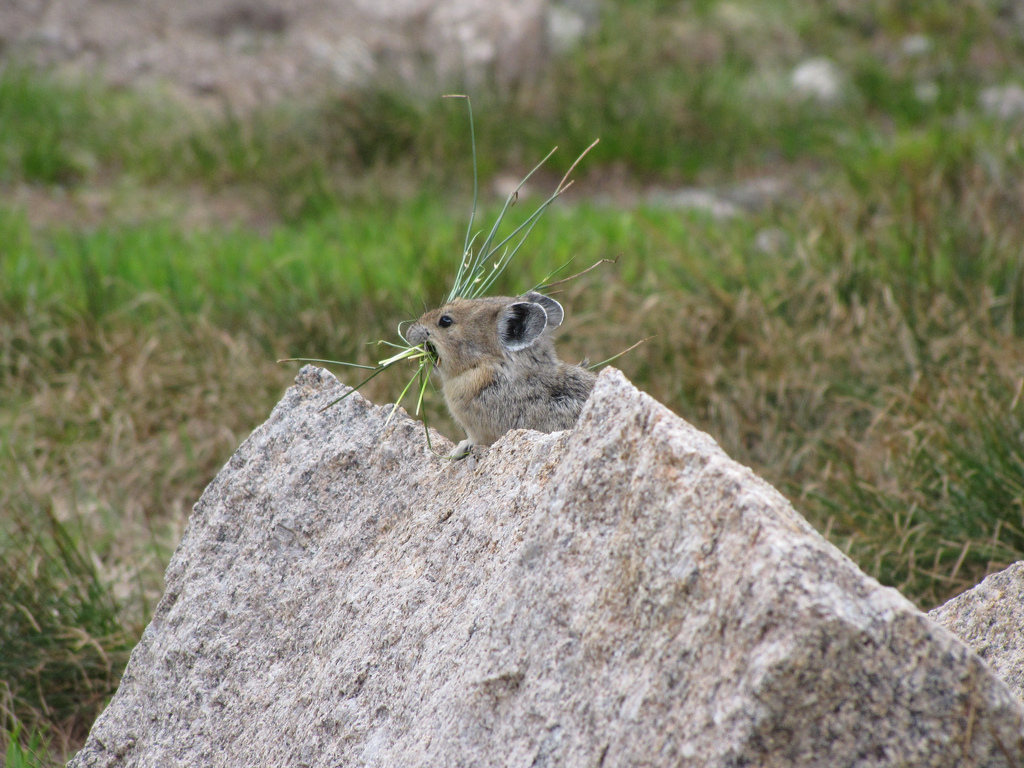Persevering pikas, herbicide inhalation in farm states and prehistoric pathogens
Southern Rockies picas unaffected by climate change: A new study from the University of Colorado at Boulder has found that American pikas, despite being temperature-sensitive animals, have not been adversely impacted by climate change.
The researchers who conducted the study assessed 69 historical sites known to host pikas within the southern Rockies ranging from southern Wyoming through Colorado and into northern New Mexico. The results showed that 65 of the 69 sites have retained their pika populations. The study was funded primarily by the National Geographic Society.
The new study stands in contrast to a study from another research group earlier this year in Nevada’s Great Basin that showed a nearly five-fold increase in local extinction rates of pika populations in the past decade. The different results may be because the more recent study area of the southern Rocky Mountains offers habitats in higher elevations that are also more contiguous than are habitats in Nevada’s Great Basin, according to the study’s researchers.
The American pika, which shares its mammal family order with rabbits and hares (lagomorpha), lives in mountainous regions including British Columbia, Washington, Oregon, Idaho, Montana, Utah, Wyoming, Colorado, Nevada, California and New Mexico. In 2010, the U.S. federal government denied an endangered species listing for the American pika partially because there were insufficient data on its distribution and abundance across western North America.
Federal scientists find herbicide in air, water samples: U.S. Geological Survey (USGS) scientists report that air and water samples taken from the states of Mississippi and Iowa show that there are considerable levels of a harmful herbicide in the air and water within the states.
The federal agency scientists reported that there were significant levels of the chemical glyphosate (used in “Roundup” herbicide) found in every stream sample examined in Mississippi in a two-year period as well as in the majority of air samples. This means people have been inhaling the herbicide, though no known detrimental effects have been yet documented. According to USGS, it is difficult and costly to test for the presence of glyphosate, which is why there has been so little research on its impacts on air and water to date.
The herbicide is the most-used worldwide where it is applied to residential yards, golf courses and farm fields. Scientific studies have revealed that its wide use has led to glyphosate-resistant ‘super weeds.” USGS scientists affirm that more research is necessary to document effects on soil organisms, plants, animals and people. The USGS data has been submitted to the Environmental Protection Agency for further review. Read more at “U.S. researchers find roundup chemical in water, air”
Prehistoric pathogens: DNA contained in recently acquired soil samples that had been frozen for 30,000 years have led to the discovery that bacteria has been resistant to modern antibiotics for longer than such drugs have existed.
The first signs of resistance to antibiotics came shortly after they had been introduced into mainstream society after World War II. Since then, the development of every new antibiotic has been followed swiftly by the appearance of microbes resistant to it with such consistency that some doctors are warning of a ‘postantibiotic age,’ in which simple infections will once again become untreatable.
The soil samples were acquired by drilling into sediments close to Dawson City in Canada’s Yukon Territory. When the researchers analyzed DNA from the drill cores, they found fragments of genes conferring resistance against various antibiotics, such as penicillin, tetracycline, and vancomycin. The scientists also identified sequences from lifeforms common to the area 30,000 years ago, such as mammoths, bison and certain grasses, as further evidence that they were looking at ancient DNA.
The study was conducted by biochemist Gerard Wright and biologist Hendrik Poinar, both of McMaster University in Hamilton, Canada. Read more at “Superbugs Predate Wonder Drugs”
Also see warmer eggs make for healthier ducklings, cane toad tadpole rivalry
and green gasoline.
Photo Credit: Chris Kennedy, U.S. Fish and Wildlife Service
